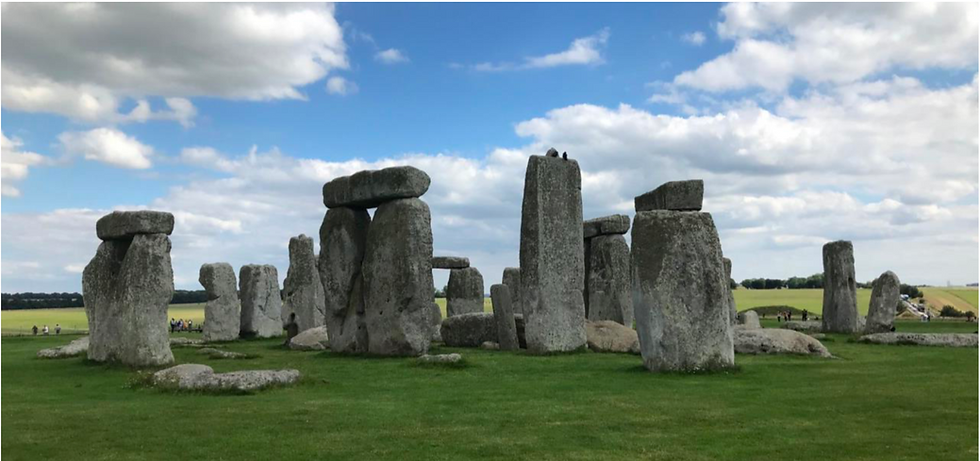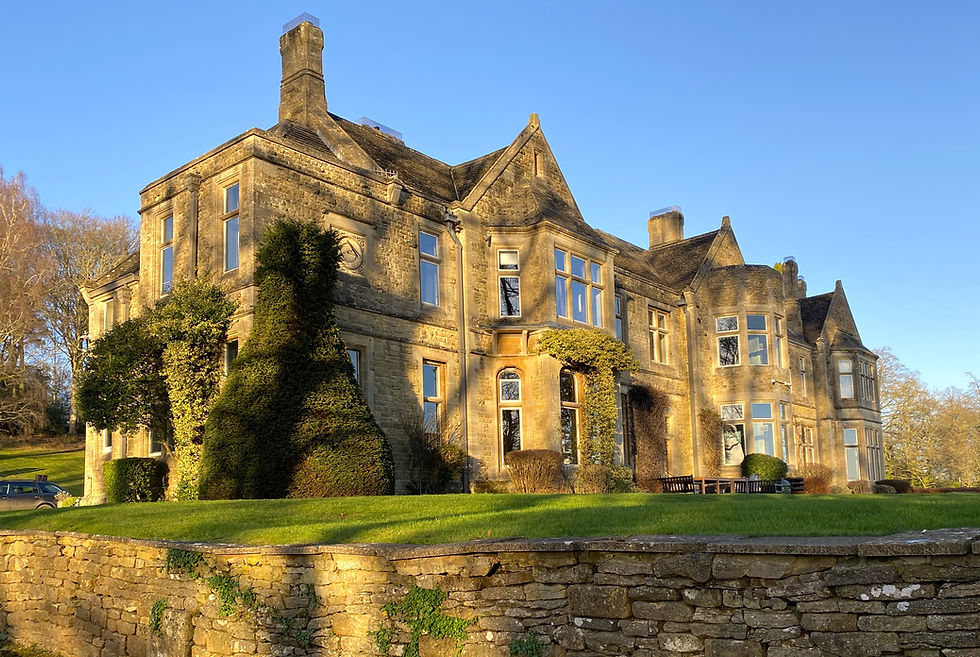A Neolithic Vision Providing Comfort in 2020
- Lucy Jarvis
- Oct 1, 2020
- 3 min read
By Danielle Morgan

My husband and I recently spent some time in the small Wiltshire village of Hindon, the ideal spot for long walks and a short stop down the A303 to Stonehenge.
As so often happens when you take a break from the fast pace of your day to day life, you have a chance to let your mind wander. To reflect on things. As I delved into the history of both Hindon and Stonehenge I marvelled at human ingenuity, at determination, resilience and the ability of places and people to survive and thrive. Doing so unexpectedly gave some comfort in the current climate. As we tentatively look for ways to safely continue building for our communities; educating our children; buying, selling, traveling, worshiping. For ways to continue living post Covid-19.
Hindon was a planned town, built in 1220 under the direction of the Bishop of Winchester. It was sited at an intersection of ancient trackways between Salisbury and Warminster - a perfect spot to locate a new settlement with passing traffic and opportunity to trade. It steadily grew and thrived, with growing numbers of cottages in burgage plots; its popular markets drawing people in. In 1754 this modest settlement boasted 14 coaching inns and public houses. It must have been like Deadwood on a bad day! Far from the chocolate box High Street you see now. In that same year Hindon was hit by a great fire, sweeping through the thatched homes and destroying a large part of the High Street (144 properties in all). The fire severely damaged the prosperity of Hindon, but it was resilient. Charitable donations poured in and rebuilding began. A turnpike, set across the new stagecoach route from London to Exeter, helped keep industry buoyant and the alehouses and inns busy. But it was not to last. The arrival of the Salisbury to Yeovil railway in 1859, with a station at neighbouring Tisbury, meant the end of Hindon’s trading heyday.
And so we have its current iteration. Hindon is now the quintessential English village and local community. The two remaining Inns are frequented by tourists like myself. By walkers, or by families on their way to Longleat Safari Park. All appreciating the church spire, the architecture, the abundance of flower baskets and the indelible footprint of the past (several properties retain the archways pertaining to their former coaching and stabling use). Set within the Cranborne Chase Area of Outstanding Natural Beauty this resilient little settlement has adapted, evolved and reinvented itself. Finding ways to support its community, carry through its past and carve out a present.
Stonehenge may be a completely different kettle of fish, but gave all the more cause for wonder and reassurance. We are all familiar with this fascinating stone circle set within a Neolitic henge. For the non- archaeologists among us (I am the Finance Director at HCUK Group), the ‘henge’ is the circular ditch and bank which runs around the outside of the stones. In ‘chicken and egg’ terms, it was the henge that came first, circa 3000 BC. The stones followed circa 2500 BC.
And it was the stones that blew my mind. The sarsen stones (the big ones) came from Marlborough Downs, some 20 miles away. Each of them weighs approximately 25-30 tonnes. That’s roughly 5 elephants or 65 Grand Pianos. The Bluestones (the smaller, yet by no means tiddly stones) came from South West Wales. Yes, Wales. This was 2500 BC. There was no haulage truck, no freight train, no self assembly with an Allen key. These stones were dragged by human effort. Now that is determination. We don’t know why these particular stones were selected, but what is clear is important it must have been considered. It was so worthwhile to the people of the day, that they went to such lengths, dragging these stones across country to erect the monolith we see today. And what a spectacle. Those of us who sat on the grass feeling moved by the might of the stones were the most recent in a long line to find affinity with the stones and landscape.
Vision, grit and determination have built our landscape, seen it evolve and allowed us to live in it for hundreds of thousands of years. The challenges of 2020 cannot be downplayed but these examples raised my spirits. People of the past had neither the benefit or constraint of today’s technology, health and safety regulations, planning regulations and communication systems. But they had aspirations, challenges, setbacks and determination. The past is all around us and time and again it demonstrates that even when the odds are against us, we can find a way forward.
.png)



Comments